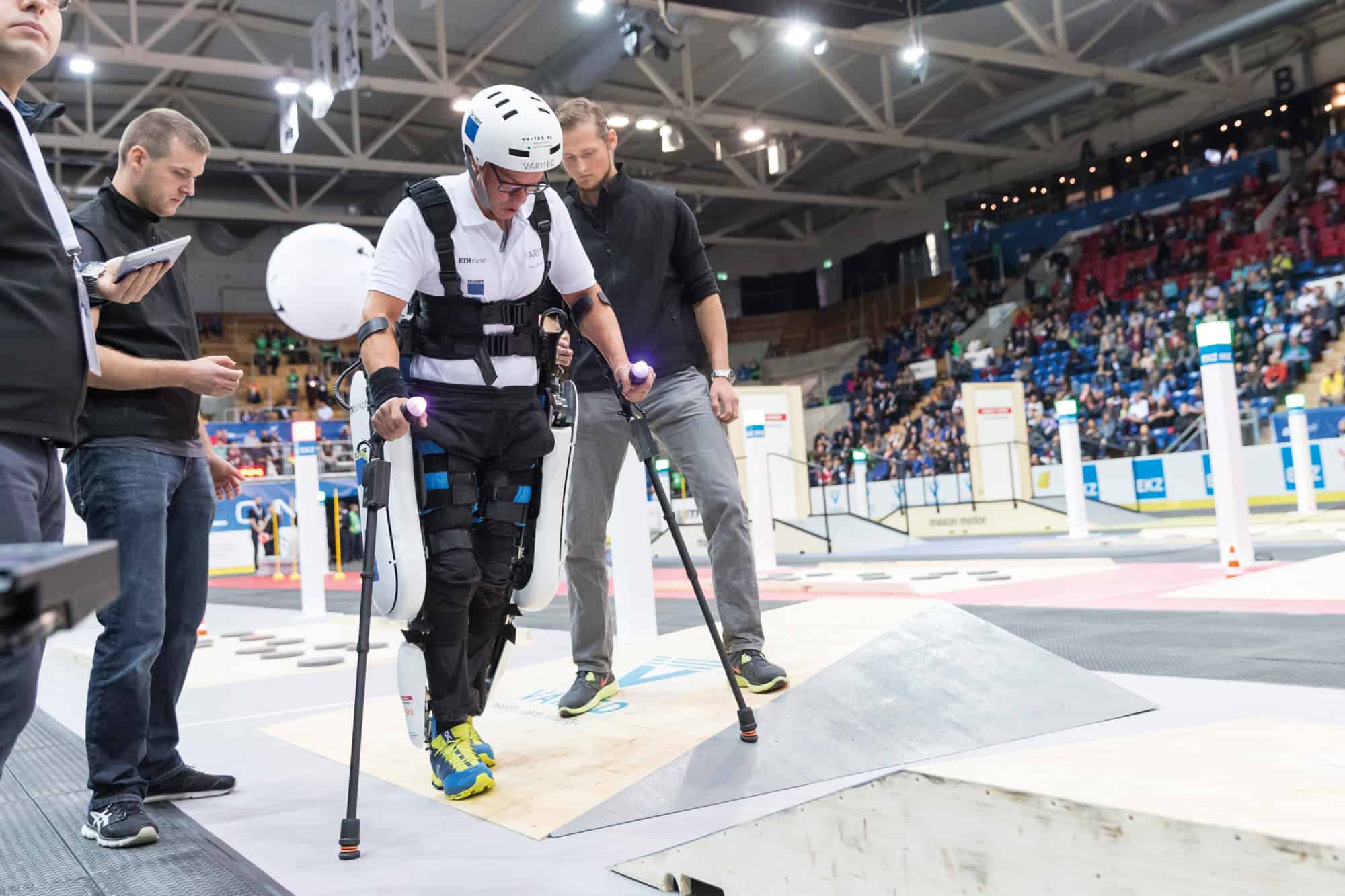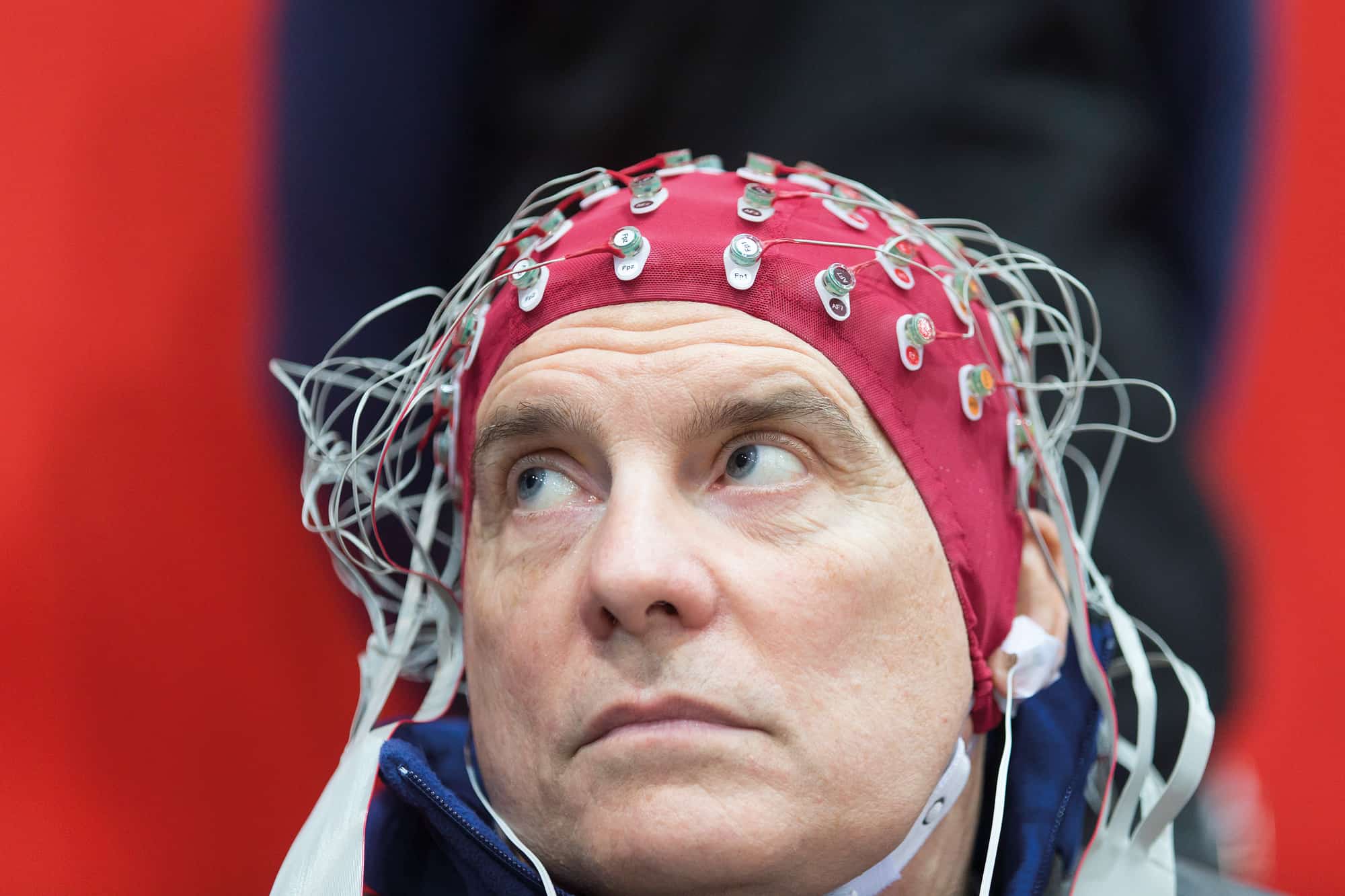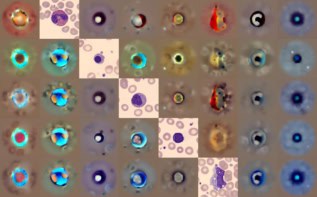Science and engineering are vital for developing “assistive technology” to help disabled people perform everyday tasks. But as Rachel Brazil finds out, a sporting contest called the Cybathlon has proved invaluable for discovering if the devices are fit for purpose
Thousands of competitors from around the world are gathering in South Korea this month to take part in the 2018 Winter Paralympics. The games – the 12th time they have been held – will include athletes with physical disabilities participating in everything from skiing and snowboarding to ice hockey and curling. Some of them will use physical aids, such as wheelchairs and “sit-skis”, to compete but there is another sporting event for people with disabilities in which the focus is entirely on participants who use such “assistive technologies” .
Known as the Cybathlon, it took place in October 2016 at the SWISS Arena in Zurich. Organized by ETH Zurich – one of Switzerland’s top universities – the event was designed to showcase the latest technologies available for disabled people. But rather than concentrating on conventional sporting success, the Cybathlon instead centred on everyday activities that are not always easy for those with disabilities, such as climbing stairs, hanging up washing or setting the breakfast table.

Physics in the dark
Using equipment designed and built by 56 teams of scientists and engineers from 25 different nations, these state-of-the-art devices were piloted by 66 drivers with disabilities, who were pitted against each other in six different disciplines. Think Formula One racing for assistive devices – from prosthetics to brain-computer-interface technologies – with the drivers as the Lewis Hamiltons of the Cybathlon. They might not be living the glamorous lifestyle of a professional racer, but each driver’s expertise was vital to their team’s success: winning meant exploiting the technological innovations to the full.
The idea for the Cybathlon was the brainchild of Robert Riener, who heads the motor-systems lab in the Department of Health Sciences and Technology at ETH Zurich. He had been wondering how to bridge the gap between the capabilities of devices designed in labs such as his and what people with physical disabilities really need. “He wanted to shift new developments out of the lab and into the lives of people with disabilities,” says Roland Sigrist, who co-directed the event with Dario Wyss (both having done PhDs with Riener).
But Riener hadn’t envisaged something on the scale of the 2016 competition. “We didn’t know if it would be interesting for people and how they would react,” admits Sigrist. “Would they cheer or be quiet? Would they leave the stadium because it was so boring?” What Sigrist and Wyss eventually organized turned into an exciting and sometimes tense public sporting event. “For me it was overwhelming,” says Sigrist. “To see the whole audience and the pilots and the teams very enthusiastic [made] it a unique experience.”
It was exciting, it was stressful, it was amazing
Ana Matran-Fernandez, University of Essex, UK
With 4600 spectators watching on, the Cybathlon showed the public how assistive technology can improve the quality of life. “It was exciting, it was stressful, it was amazing,” says Ana Matran-Fernandez, an engineer from the University of Essex, who led one of four UK teams to take part in the Cybathlon. Dubbed the “BrainStormers”, her team won a bronze medal in the brain–computer interface event, in which an avatar is manoeuvred around a computer game through thought only.
Her enthusiasm was shared by other competitors, such as Aldo Faisal, a neurotechnologist at Imperial College London, who led Team Imperial. “Showing to the world what is possible, and making it into a sports contest was fantastic,” he says. But the Cybathlon wasn’t just meant to highlight state-of-the-art technology – it was also designed to empower end users, with the pilots collaborating fully with the scientists and engineers on their team . “With a lot of these technologies, the engineering team designs without the end user involved and, at the end of the project, the user will say ‘that doesn’t work’,” Faisal explains.
Powered-arm prostheses
The devices on display at the Cybathlon covered a wealth of cutting-edge science and engineering – and developing many of them needed a careful understanding of the mechanics of human motion. Prosthetic legs, for example, have to support movement on a range of surfaces with varying forces. Assistive devices also increasingly deploy electronic signals to control and instruct movement, which involves finding methods to interface them efficiently with the user. As a result, the teams are becoming ever more interdisciplinary, with physicists, engineers and computer scientists all involved in the design.
Faisal’s Team Imperial entered several events, including the powered-arm prosthesis race. The races in this discipline required pilots who do not have arms to manipulate a series of objects, such as opening and closing clothes pegs to simulate someone hanging out their washing. As the latest bionic designs aim to transfer an intended motion from the user to the prosthesis automatically, the most natural solution would be to detect electronic activity in the remaining arm muscle of a user’s damaged limb.

Based on the work of many different student projects in physics, maths and engineering, Team Imperial’s arm prosthesis took a new approach. It avoided one of the biggest problems in powered-arm prosthetics, which is that the electrical contact between the user and the prosthetic can break down if, for example, the user starts to sweat. If that happens, the signal from the user does not then get received by the bionic arm. The team instead used a novel way of controlling a prosthetic arm designed at Imperial, which exploits the fact that when muscles tense up, they vibrate.
Instead of detecting electrical signals, their system detects mechanical signals from the user’s bicep muscles with an acoustic microphone, known as mechanomyography. These tiny vibrations are then converted back into electric responses at the microvoltage level and the signal is sent to the robotic hand, which moves in response. “Not only can we tune a better data-to-noise ratio, but it’s also about a hundred times cheaper than expensive high-gain amplifiers for each muscle,” Faisal claims.
Exploiting exoskeletons
The Cybathlon also included a race involving powered exoskeletons, which is a less established type of technology. These rigid, powered “gait-restoration” frames, which are worn or strapped on to the body, allow people with little or no mobility to walk upright, often using crutches for balance. While they may sound like science fiction, exoskeletons are already available in some spinal-chord-injury rehabilitation units. But current devices are slow – users typically go at barely a third of normal walking pace – and, like the Daleks in Doctor Who, they find stairs difficult.
In the exoskeleton race, pilots with complete paraplegia, who cannot control their legs, were required to climb stairs, sit down on a chair and manoeuvre across ramps. Researchers from ETH Zurich’s Rehabilitation Engineering Lab, who competed in the VariLeg team, approached the challenge by starting their exoskeleton design from scratch, seeking to replicate human movement as closely as possible. That’s harder than it sounds. If you’re an able-bodied person and, say, collide with an object, it doesn’t affect your gait: step on a stone, and your leg will become “compliant” and stiffen or bend as required. “We humans do that automatically and our research is now trying to imitate this natural human behaviour,” explains team member Volker Bartenbach.

In robotics, the term “compliance” means flexibility or suppleness. It’s the property that allows able-bodied humans to grasp an egg without crushing it. A non-compliant robot, in contrast, has predetermined positioning and will follow the same path despite any impediment. Compliance allows a variation of positioning and is what the VariLeg team tried to design into their exoskeleton – essentially allowing a user to deal with the ups and downs of uneven ground.
“Human muscle is very complex, but [we] have attempted to imitate it,” says Bartenbach, whose team has essentially integrated a spring into the leg joint so that it is compliant. The knee joint is driven by a variable stiffness actuator (VSA) that can change the stiffness of the knee so that it can adapt to different surfaces. This stiffness is controlled by modulating the tension of the spring, which is currently preset, though staff in Bartenbach’s lab are working on how an exoskeleton user could change the setting at will or even automatically.
VariLeg came fifth out of seven teams in the exoskeleton race, which was eventually won by ReWalk – a German firm that makes commercial exoskeleton systems for people to use at home and in rehabilitation clinics. Mirroring the Formula One analogy, the event not only required technical innovation, but also a skilful driver. “This is not easy to do, especially with the harder obstacles,” says Bartenbach. One of the obstacles in the race was a series of uneven stepping stones, which required a really high mobility, “We do not have [that] at the moment with our system, but maybe will in the future,” adds Bartenbach.
Brain waves
Another assistive technology that featured at the Cybathlon involved brain–computer interfaces (BCI). It’s a new area of research, which involves placing electrodes over the scalp to measure electrical activity in the brain. Known as electroencephalography (EEG), the technique can turn characteristic signals associated with particular thoughts into commands that let people with paralysis control a computer or device. In the Cybathlon race, the pilots controlling the BCI were required to move an avatar in a computer game through a series of obstacles using only their thoughts.
According to Matran-Fernandez from Essex’s BrainStormers team, a key part of any BCI design is to identify the distinct brain patterns that could constitute commands. It’s a bespoke effort, which in her case required asking the pilot to think different things many times over and then using a computer algorithm to find any signals that are different enough to be used in the game. “You are trying to find different thinking activities that produce a different pattern on the brain of the person who is going to wear the BCI,” Matran-Fernandez explains.

The pilot in question was David Rose – a former rugby player who Matran-Fernandez found in an online forum and was keen to be part of the BrainStormers team. Once Rose had been tested, Matran-Fernandez and her colleagues came up with four usefully distinct thoughts from him: three to move the avatar in different ways and one for it to stay put. The thoughts they ended up using were: moving your right hand; moving your feet; thinking of a telephone ringing; and playing a word game in your mind. These all produced identifiable signals that could be differentiated by the BCI as they came from different parts of the brain.
The BrainStormers’ system was set up specifically to work with Rose’s brain and, unfortunately, would need to be reprogrammed if it were used by a different competitor as there are slight variations in everyone’s brain pattern. As Matran-Fernandez explains, when people with long-term paralysis think about moving their limbs, they are no longer used to using them. The brain area in which the signal is observed may therefore have shifted from the specific part of the motor cortex used by able-bodied people to somewhere new.
As with the exoskeleton race, the pilot has a huge role to play in the BCI events too. “If you start tensing the muscles in your neck the signal [this creates] is much bigger than what you get from the BCI and that will mess up the whole system,” says Matran-Fernandez. Luckily Rose was an experienced competitor and the BrainStormers bagged a bronze medal.
The future starts here
Key to the success of the Cybathlon was that it allowed different technologies to be directly compared and observed in a race. As Faisal points out, researchers working on assistive technology usually do things in isolation and rarely compare themselves against each other. “Everyone does their own thing and never benchmarks themselves against the competition,” he says. “Here we had a level playing field and could objectively see how good the different approaches are.”
Everyone does their own thing and never benchmarks themselves against the competition. Here we had a level playing field and could objectively see how good the different approaches are
Aldo Faisal, Imperial College London
The Cybathlon also allowed people to assess the maturity of each discipline – to see what is and is not possible – and revealed where people have misconceptions. “For example, BCIs just don’t work particularly well and give the impression you can read people’s minds,” Faisal says, “[but] we are very far away from that.”
Even for arm prostheses, which have been commercially available for more than 50 years, there are still challenges for what is a mature technology. The team that won the powered-arm prostheses race in Zurich, for example, used relatively old technology based on the movement of shoulder muscles to open and close a claw hand. “In real life, we know that 30% of bionic prosthetics are abandoned within six months of first use,” Faisal points out, with users finding that the devices either don’t work well, are uncomfortable or aren’t easy to use, meaning that the challenge is to find something that feels more intuitive. “It needs to be seen as part of your body and that requires thinking about the cognitive and psychological aspects of the design,” Faisal says.
As for exoskeleton technology, it is accelerating rapidly in terms of the number of scientific publications as well as companies, more than 50 of which were listed on the exoskeleton.com website in 2015. Researchers at ETH Zurich, for example, have set up a firm called MyoSwiss to develop wearable muscle supports to improve the mobility of people with weak muscles. Bartenbach, who is not part of the firm, says that while it’ll be at least a decade before paraplegics can throw away their wheelchairs, it’s likely they’ll find themselves using an exoskeleton in certain situations, such as getting out of a chair. “An exoskeleton won’t heal your injury, but it can help your body remain active. The task now is to make current devices faster, lighter and cheaper.”
An exoskeleton won’t heal your injury, but it can help your body remain active. The task now is to make current devices faster, lighter and cheaper
Volker Bartenbach, ETH Zurich
Matran-Fernandez, however, is not as optimistic about the future for BCI. Current communications technology allows the user to spell two or three words a minute, “which is really slow for a person who can type or speak” she says, and it is impossible to combine the technology with movement. “No system is going to be able to filter out the [electrical signal] noise that you create by moving,” she adds.
One area where BCIs are actively being pursued is for people suffering from “locked-in syndrome” – when they have awareness but are completely paralysed and sometimes cannot even move their eyes. In 2017 researchers from the University of Utrecht in the Netherlands implanted a BCI in a locked-in patient who was suffering from motor-neurone disease. The electrode was positioned over their brain’s motor cortex, connected to a transmitter implanted in the chest. When thinking about moving their hand, the patient was able to control a typing programme, at a speed of two letters a minute.
With so many promising research avenues, another Cybathlon in Zurich is already being planned for May 2020, with organizers envisioning a longer, two-day competition next time around. “We have space for 96 teams, which will be around 30 teams more than in 2016,” says Sigrist. And while the disciplines will stay the same, co-director Wyss promises extra challenges for teams in some disciplines. Smaller, satellite events in separate disciplines are also planned before the main event, hosted by universities across Europe, including one in Graz, Austria, next year.
Veterans of the 2016 Cybathlon are now planning their strategies for the 2020 rematch and eyeing up yet further innovations. Matran-Fernandez, for example, is trying to persuade her colleagues to create a new team to take part in Zurich and also to develop a practical BCI system. And that’s the key. If the Cybathlon can speed up the development of assistive technologies, it will have shown the value and rewards of research – and benefit people in everyday life.




